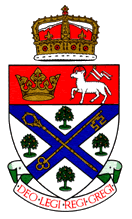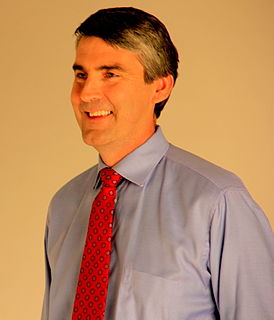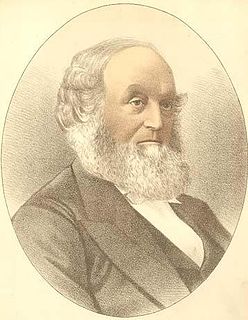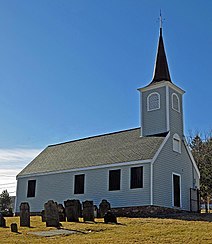
Andrew Mitchell Uniacke (1808 – 1895) was a lawyer, banker and politician in Nova Scotia. He represented Halifax township in the Nova Scotia House of Assembly from 1843 to 1847.

Nova Scotia is one of Canada's three Maritime Provinces, and one of the four provinces that form Atlantic Canada. Its provincial capital is Halifax. Nova Scotia is the second-smallest of Canada's ten provinces, with an area of 55,284 square kilometres (21,300 sq mi), including Cape Breton and another 3,800 coastal islands. As of 2016, the population was 923,598. Nova Scotia is Canada's second-most-densely populated province, after Prince Edward Island, with 17.4 inhabitants per square kilometre (45/sq mi).

The Nova Scotia House of Assembly is one of two components of the General Assembly of Nova Scotia, the other being the Queen of Canada in Right of Nova Scotia represented by the Lieutenant Governor of Nova Scotia. It is the legislative branch of the provincial government of Nova Scotia, Canada. The assembly is the oldest in Canada, having first sat in 1758, and in 1848 was the site of the first responsible government in the British Empire.
He was born in Halifax, the son of Richard John Uniacke and Eliza Newton. He was educated at King's College and went on to study law. In 1834, he married Elizabeth Fraser. He was president of the Bank of Nova Scotia from 1872 to 1874. He died in Dover, England.

Richard John Uniacke was an abolitionist, lawyer, politician, member of the Nova Scotia House of Assembly and Attorney General of Nova Scotia. According to historian Brian Cutherburton, Uniacke was "the most influential Nova Scotian of his day.... His faith in Nova Scotia's destiny as a partner in a great empire was only to be equalled by Joseph Howe." He devoted 49 years to public service in Nova Scotia. He fought in the American Revolution and later sought to emancipate Catholics and Black Nova Scotians who were slaves in Nova Scotia. He is buried in the crypt of St. Paul's Church. His substantial estate is preserved as the Uniacke Estate Museum Park at Mount Uniacke.

The University of King's College, established in 1789, is in Halifax, Nova Scotia. It is the oldest chartered university in Canada, and the first English-speaking university in the Commonwealth outside the United Kingdom. The university is renowned for its Foundation Year Program, a comprehensive and interdisciplinary examination of Western culture through Great Books, designed for first-year undergraduates. It has also garnered acclaim through its upper-year interdisciplinary programs - particularly its Contemporary Studies program, Early Modern Studies program, and its History of Science and Technology program. In addition, the university boasts a journalism school which attracts students across the world for its intensive Master of Journalism programs and its Master of Fine Arts in Creative Nonfiction, the first of its kind in Canada. Its undergraduate Journalism programs are known for leading content in digital formats.













